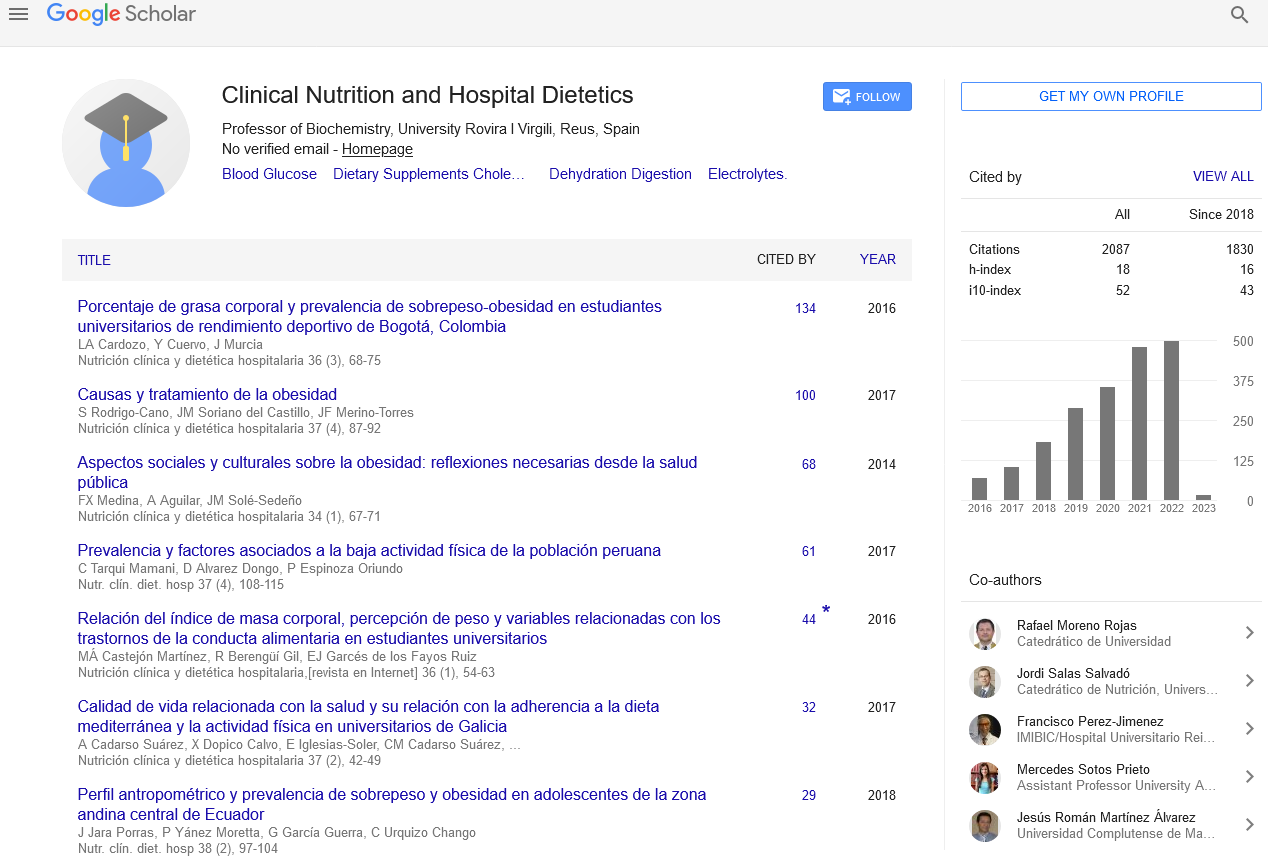Abstract
Indicadores clĂnicos antropomĂ©tricos na avaliaĂ§Ă£o da gordura visceral: uma atualizaĂ§Ă£o
Author(s): Carneiro Roriz, Anna KarlaĂ‚Â¹; Santana Passos, Luiz Carlos2; Cunha de Oliveira, Carolina3; Eickemberg, Michaela4; De Almeida Moreira, Pricilla1; Barbosa Ramos, LĂƒÂlian1
Introduction: Visceral obesity is associated with an increased risk of metabolic disorders and occurrence of chronic diseases. The quantification of the visceral fat becomes necessary and advantageous in clinical practice, especially through accurate and precise methods in replacement of imaging methods as computed tomography (CT).
Objective:To present the use of anthropometric indicators that have been linked to visceral fat.
Methods: The selection of items was taken in from Scopus, Scielo, Lilacs, CAPES journals, PubMed/ MEDLINE and Google Scholar, in the period between 2007 and 2014. Anthropometric and clinical indicators as waist circumference (WC), waist- to- height ratio (WHtR), waist-to- thigh ratio (WTR), waist- to- hip ratio (WRH), sagittal abdominal diameter (SAD), abdominal diameter height index (SAD/ Height), abdominal diameter index (ADI), conicity index (CI), visceral adiposity index (VAI) and the lipid accumulation production (LAP) were investigated for their relationship with visceral fat measured by CT.
Results: Most indicators have strong correlation (r>0.70) with visceral fat. It was observed that there are few recent studies evaluating this relationship, especially with the indices derived of the WC and the SAD, besides the LAP and the VAI. Most studies investigated the relationship between these indicators with the diseases that are consequent of the visceral obesity.
Conclusion: The clinical anthropometric indicators are accurate in estimating visceral obesity, easy to use and has low cost enabling clinical nutritional assessment able to intervene earlier and more effectively in the prevention and/or treatment of this obesity.
Google Scholar citation report
Citations : 2439
Clinical Nutrition and Hospital Dietetics received 2439 citations as per google scholar report
Indexed In
- Google Scholar
- Open J Gate
- Genamics JournalSeek
- Academic Keys
- JournalTOCs
- ResearchBible
- SCOPUS
- Ulrich's Periodicals Directory
- Access to Global Online Research in Agriculture (AGORA)
- Electronic Journals Library
- RefSeek
- Hamdard University
- EBSCO A-Z
- OCLC- WorldCat
- SWB online catalog
- Virtual Library of Biology (vifabio)
- Publons
- MIAR
- Geneva Foundation for Medical Education and Research
- Euro Pub
- Web of Science
Journal Highlights
- Blood Glucose
- Dietary Supplements
- Cholesterol, Dehydration
- Digestion
- Electrolytes
- Clinical Nutrition Studies
- energy balance
- Diet quality
- Clinical Nutrition and Hospital Dietetics




